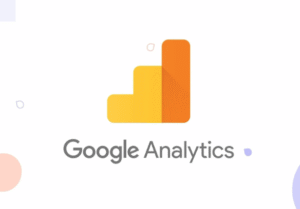Introduction
Choosing between PostHog and Mixpanel is a common fork in the road. Both tools offer deep product analytics and strong communities. Their strengths overlap, yet their philosophies differ in important ways. Your team wants clarity, not another pitch deck. I promise to talk like a human, and yes, I drink too much coffee.
Product analytics should unlock decisions without adding friction to the day. That simple goal hides a forest of choices and acronyms. Data models, consent flows, and identity stitching can overwhelm busy teams. I have been there, chasing one metric through ten tabs. Let us compare the essentials and leave fluff at the door.
Want web & product analytics?
PrettyInsights has your back—privacy-friendly, real-time, and built for growth.
Quick summary
PostHog shines when you want broad capabilities in one stack. Mixpanel excels when you want polished analysis and fast exploration. PostHog includes feature flags, experiments, replays, and strong self hosting. Mixpanel delivers refined funnels, cohorts, and crisp dashboards at scale. I will not crown a universal winner, because your context decides.
Pricing and licensing
PostHog pricing and hosting options
PostHog supports both cloud hosting and self hosting in your environment. The model aligns costs mainly with event volume and retention. Self hosting offers control, engineering effort, and budget flexibility. Many teams like the option to keep data on their own infrastructure. I like choice, and PostHog gives you exactly that option.
Cloud plans simplify maintenance and upgrades for smaller teams. Self hosting fits teams with DevOps skills and strict data policies. Event spikes can change monthly bills in either setup. Budget planning should include buffer for seasonal campaigns. That advice saved me during a holiday surge once.
Mixpanel pricing tiers and limits
Mixpanel focuses on cloud simplicity and speed for most teams. Pricing ties closely to events, retention windows, and advanced features. The free tier is generous for early exploration and prototypes. Growth plans unlock richer analysis and increased data windows. Finance leaders like the predictability, and I do not blame them.
Be mindful of event growth and audience size over time. Experimentation frameworks can multiply events across variants. A single feature launch can double volumes for a month. Good forecasting avoids surprise invoices at quarter close. I keep a simple sheet for that, and it works.
Total cost of ownership considerations
Total cost goes beyond a line on the invoice each month. Consider implementation time, data governance, and maintenance overhead. Self hosting introduces server costs and on call practices. Cloud plans remove that work but keep data off site. Your legal counsel may have an opinion, and you should listen.
Data model and tracking setup
Event schema, properties, and identity resolution
Both tools organize data around events, properties, and profiles. Clean schemas make analysis faster and far more reliable. Decide early how you will map user identifiers across devices. Adopt a plan for anonymous sessions and later merges. Future you will be grateful for that document.
Identity resolution should be deliberate, not accidental and chaotic. Use stable user identifiers where possible across platforms. Track device identifiers for pre sign up behavior. Design a secure merge strategy for conversions and upgrades. I sketch this on paper first, because it clarifies thinking.
SDKs and implementation across platforms
PostHog and Mixpanel ship mature SDKs for web and mobile. Server side libraries support back end events and batch imports. Use one library per platform to reduce drift and bugs. Version pinning keeps schemas consistent across release cycles. I learned that lesson after a long Friday night.
Instrument key milestones before chasing edge events and curiosities. Start with activation, engagement, and retention signals you trust. Add errors and performance markers for real product context. Keep names human readable and short for every property. Debugging becomes faster and far less painful.
Data governance and quality controls
Governance prevents entropy from creeping into your tracking plan. Establish naming conventions for events and properties on day one. Document acceptable values, types, and example payloads. Gate new events through quick reviews or pull requests. I like having one responsible owner per domain.
Use sampling checks and schema validation in your pipeline. Track event rejection rates to spot implementation drift. Sync definitions to your team wiki and onboarding guide. Tie dashboards back to the official taxonomy page. Everyone then speaks the same language without confusion.
Core product analytics capabilities
Funnels, cohorts, and retention
Mixpanel built its reputation on fast funnels and sticky cohorts. Funnels feel responsive even with large datasets in practice. Cohorts update quickly and power targeted follow up campaigns. PostHog offers similar features with flexible breakdowns and views. The experience is strong and continues to improve.
Retention curves tell the truth about product value over time. Look at first week and first month retention separately. Identify breakpoints by device, channel, and plan tier. PostHog and Mixpanel handle these slices with ease. I still export a CSV sometimes, because habits die slowly.
Segmentation, dashboards, and reporting
Segmentation is the heart of every product investigation today. Both tools let you filter by behavior, property, and cohort. Mixpanel wins on polish and speed in many flows. PostHog answers with breadth and custom flexibility across modules. Your analysts will be productive in either ecosystem.
Dashboards should inform daily action, not just look pretty. Build dashboards around jobs to be done, not vanity charts. Combine funnels, retention, and growth metrics on one view. Share alerts when thresholds break or anomalies show up. I like one page that tells the whole story.
Experiments and feature impact analysis
Experiments turn opinions into measured outcomes across teams. PostHog includes A B testing with built in feature flags. You can link experiments to flags and rollout plans. Mixpanel supports experiment analysis through integrations and events. The setup differs, but the result is similar.
Impact analysis should not stop at conversion percentages and p values. Track downstream effects on retention and revenue over time. Watch for counter metrics like support load or latency changes. Connect experiments to real product KPIs before calling a win. I talk about this like a broken record at standup.
Web analytics and user behavior
Session replay, heatmaps, and qualitative insights
PostHog includes session replays and heatmaps within the same platform. That tight integration accelerates debugging for product and support. Mixpanel relies more on partners for qualitative behavior tools. The split can be fine if your stack already includes replay. I like one login, but your mileage may vary.
Replays help teams see friction moments that metrics miss often. Combine replay flags with funnel breakpoints for fast triage. Heatmaps guide layout decisions and micro copy experiments. Use them to locate dead zones and rage clicks at scale. Yes, rage clicks are a real thing and they hurt.
Paths, flows, and navigation analysis
Pathing shows how users move through product surfaces and flows. Both platforms deliver useful path exploration and branching views. Mixpanel feels efficient for quick journey maps with filters. PostHog handles deeper filters alongside replays for context. Together, you get useful answers without extra exports.
Path analysis can drive copy changes faster than large redesigns. Identify loops, dead ends, and unexpected detours in seconds. Promote helpful steps that correlate with successful outcomes. Remove steps that trap users before their aha moment. I cheer when a single change lifts conversion by ten percent.
Feature flags and product operations
Feature flags reduce risk while shipping changes to production. PostHog treats flags as a core module with nice guardrails. Gradual rollouts, kill switches, and audience rules live there. Mixpanel integrates with flag platforms and reads the signals. Many teams prefer that separation of concerns in practice.
Flags should connect to experiments and metrics by default. Engineers get safer deploys while PMs get clear insights. Agree on naming and cleanup rules for old flags. Old flags become tech debt very quickly in real life. I schedule a monthly flag review to keep things tidy.
Integrations and data pipeline
Integrations decide how data travels between your favorite tools. Both platforms support warehouses, reverse ETL, and marketing destinations. You can move data in and out with APIs and webhooks. Choose a source of truth for identity and consent first. That choice saves pain during audits and migrations.
Here are common integration patterns that work well:
-
Ship all events to your warehouse, then sync curated models back
-
Send product events to marketing tools for lifecycle campaigns
-
Use webhooks to trigger support workflows from critical events
-
Keep a nightly export for legal and compliance reporting
-
Mirror core cohorts to ad platforms for smarter retargeting
I love clean pipelines because they make everything else easier.
Scalability and performance
Performance matters when dashboards must load during a meeting. Mixpanel delivers fast queries under heavy loads for many teams. PostHog scales well with proper infrastructure and tuning. Self hosted clusters require planning, monitoring, and regular upgrades. Cloud plans reduce that work but still need watchers.
Data retention windows affect costs and analysis depth together. Keep raw data where needed and summarized data elsewhere. Archive long tail events to cheaper storage with clear policies. Communicate retention to stakeholders so expectations match reality. I put that policy in our handbook, in bold.
Security, privacy, and compliance
Privacy rules are not optional anymore across regions. Both platforms support consent flows and data deletion requests. PostHog self hosting gives stronger control over residency choices. Mixpanel offers regional data options and strict access controls. Your legal team should review the contract language closely.
Adopt least privilege access for all analytics accounts today. Rotate keys and audit event payloads for sensitive data. Mask or drop personal identifiers that you do not need. Maintain a clear runbook for right to be forgotten. I sleep better when that playbook is tested.
Implementation and time to value
Time to value depends on your tracking discipline more than tools. A good plan beats a sprawling and brittle implementation. Start with a minimal set of events tied to outcomes. Build a dashboard that answers weekly questions without effort. Add depth once the basics are stable and trusted.
Migration between tools requires patience and careful mapping. Export historical data where contracts permit that move. Recreate cohorts and definitions before you cut over. Expect some differences in queries and counting rules. I allow overlap time to compare numbers and settle nerves.
Use case recommendations
Early stage teams often choose PostHog for breadth and control. They like replays, flags, and experiments in one place. Growth teams with speed needs often lean toward Mixpanel. They get fast funnels and delightful cohort workflows for daily work. Both choices can scale with good engineering discipline.
Regulated industries may prefer PostHog with self hosting options. Enterprise teams with central data platforms like Mixpanel integrations. Agencies that support many clients value easy dashboards and sharing. Internal platforms teams value flags and experimentation as core modules. Your stack and culture point to the best fit.
Decision checklist
Use this fast checklist during vendor evaluations and workshops:
-
Do we require self hosting or strict residency controls today
-
Which events and KPIs actually drive decisions each week
-
What is our forecasted event volume for the next four quarters
-
Which teams need replays, flags, and experiments under one roof
-
How will we govern schemas, retention, and identity resolution
-
Which integrations are absolute must haves for our workflows
-
How quickly must a new question become a shareable chart
I copy this list into kickoff docs and save time for everyone.
Frequently asked questions
Is PostHog open source and can I self host it today
Yes, PostHog supports a self hosted model with community roots. Many teams choose that path for control and privacy. You will need internal ownership and infrastructure capacity. The benefit is direct command over data and upgrades. I admire teams that run it well in production.
Does Mixpanel support raw data export and warehouse syncs
Mixpanel supports export and warehouse connections through official integrations. You can push data to BigQuery, Snowflake, and Redshift. Some features depend on plan levels and configuration details. Validate the exact needs with your account team early. Surprises vanish when you test the flow end to end.
Which tool is better for experiments and flags overall
PostHog provides native feature flags and experiment tooling together. Mixpanel analyzes experiments well when integrated with flag tools. The better option depends on how your engineering team operates. If you want one place for flags, PostHog fits neatly. If you like separation, Mixpanel plays nicely with partners.
PrettyInsights: a privacy friendly alternative to PostHog and Mixpanel
If you want web and product analytics in one clean place, try PrettyInsights. We focus on clarity, speed, and privacy from the first screen. You get real time dashboards without complicated setup rituals. Cookieless tracking respects users and still delivers useful insights. I like tools that help without demanding a ceremony.
PrettyInsights keeps pricing simple and predictable for growing teams. Setup takes minutes with lightweight scripts and clear guides. Product events live beside website traffic for full journey insight. GDPR and regional privacy rules guided our design from day one. Start free, measure what matters, and keep your weekends.
Conclusion
PostHog and Mixpanel both deliver serious value for modern teams. Your decision should start with goals, constraints, and team rhythm. If you need one platform with flags and replays, look at PostHog. If you want swift analysis and polished cohort work, consider Mixpanel. The good news is that either tool can succeed with discipline.
Make your plan, name your events, and guard your taxonomy. Set expectations for costs, retention, and query performance early. Share a dashboard that answers the big questions without wandering. Then run experiments that measure impact, not just activity. And if you want a friendly third path, PrettyInsights is ready.
I will end with a tiny joke to keep spirits high. I tried to measure my coffee intake, but the funnel kept converting.




